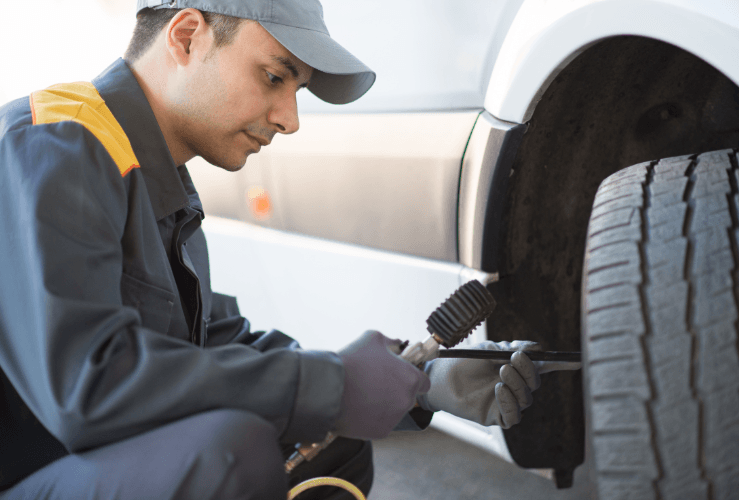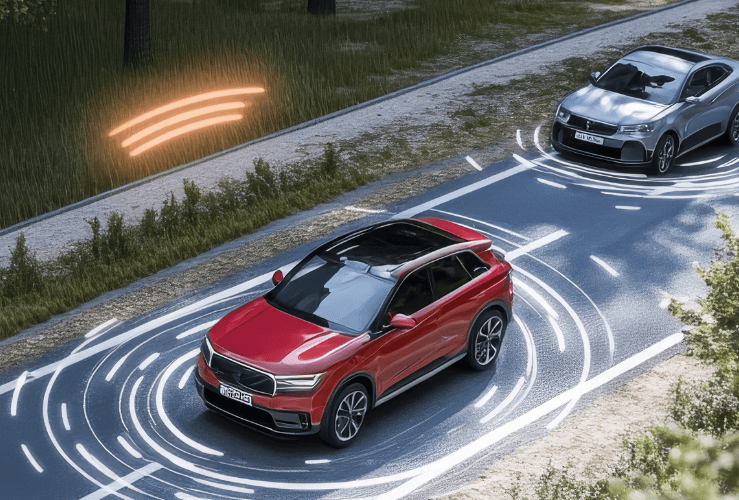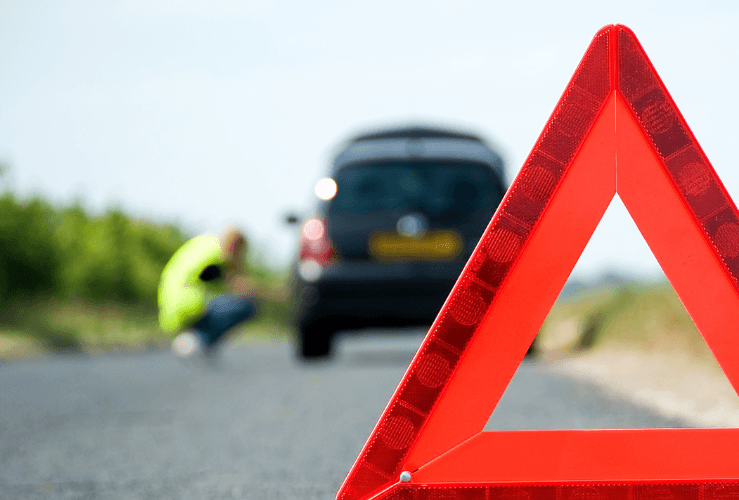In a rapidly changing industry, it pays to be fleet-footed when it comes to risk management. Learn how to mitigate the multiple risks that come with operating a modern fleet in the UK.
Running a fleet of vehicles comes with inherent risks, and these risks need to be managed.
As a fleet manager your primary moral and legal responsibility is to ensure your vehicles are in good working order, so that any threats to the safety of your drivers and the public is mitigated.
But fleet risk management goes beyond safety, covering cost management, regulatory compliance and asset protection.
In this article we’ll explore the key aspects of modern fleet risk management, with a view to helping you operate a safe, legally compliant and commercially successful fleet.
Key components of fleet risk management
Driver safety and training
Good drivers are the lifeblood of any fleet. Rather than an undesirable cost, staff training should be seen as an investment in the long term safety of your fleet.
- Establish onboarding/training programs for new drivers, covering key aspects of expected day-to-day tasks
- Implement regular driver training programs to improve skills and awareness; legislation and day-to-day operations change over time, so it’s important drivers receive training that helps them deal with these.
- Educate drivers on things like defensive driving, fatigue avoidance/management, and current traffic laws.
- Monitor driver behaviour through telematics and provide feedback: Many of today’s telematics systems include features that monitor things like speeding, harsh braking, idling, and even fatigue (via drowsiness detection systems).
- Harnessing ‘gamification’ via driver apps, with points or rewards for safe driving. This can help with driver engagement and retention, as well as safety.

Vehicle maintenance and inspections
No fleet manager wants their drivers - or any members of the public - to come to any harm due to an under-maintained fleet vehicle. Aside from the human and moral needs to optimise safety levels, there are legal considerations: if someone is injured or dies due to a poorly maintained vehicle, or one that does not meet regulatory standards, severe legal ramifications could ensue.
Regular vehicle maintenance will also help reduce breakdowns and asset downtime, which can harm a fleet’s bottom line.
With these factors in mind, staying on top of vehicle maintenance is of paramount importance.
- Schedule regular maintenance/repairs to ensure vehicles are in optimal condition. Fleet management software and apps can help with this.
- Conduct pre-trip and post-trip inspections to identify any potential issues, preventing small problems from becoming more serious.

Telematics and technology
Telematics is now utilised by much of the fleet sector, having proven itself as a powerful way to ensure a company’s assets are being used safely and efficiently.
Vehicles can now be managed in real time, meaning they can be re-routed to suit updated schedules/tasks or to avoid congested roads.
- Harness GPS tracking, dash cams, and telematics systems to monitor vehicle location, speed, and driver behaviour. As mentioned, some systems can now monitor for driver drowsiness.
- Analyse data to identify risky driving patterns (e.g., harsh braking, speeding, rapid acceleration), or wasteful behaviour (e.g., idling).
- Implement real-time alerts for unsafe driving practices/behaviour. For example, systems can monitor drivers for fatigue or being distracted (e.g. mobile phone use, to give an extreme example).
Compliance with regulations
As a fleet manager, you’ll already understand that meeting compliance standards and applicable regulations is a big part of the job.
If a goods or passenger vehicle operator fails to meet the necessary regulations, a traffic commissioner may “revoke, suspend or curtail an operator’s licence.” (GOV.UK), which would of course have disastrous implications for any fleet.
- Ensure adherence to UK, and, if applicable, international transportation regulations (e.g., hours of service, weight limits, emissions standards).
- Stay up-to-date with changes in pertinent UK legislation and industry standards.
- Maintain accurate records for audits and inspections. The DVSA has the power to carry out an audit on your fleet to ensure compliance. The DVSA also undertakes roadside inspections.

Accident prevention and response
Prevention is better than cure, which is why it’s so important to create strategies that minimise the risk of accidents happening in the first place. However, accidents do happen, so it is critical your drivers know exactly what to do in an emergency.
- Develop strategies to reduce the likelihood of accidents (e.g., route optimisation, avoiding high-risk or congested areas, or roads to avoid in high winds - or during other kinds of bad weather).
- Establish clear protocols detailing how drivers should respond to accidents, including reporting and investigation procedures.
- Provide drivers with emergency kits (hi-vis clothing, communication devices, breakdown and repair tools, first aid kit, water and non-perishable food etc.)
- Provide drivers with training on how to handle accidents.
Insurance and liability management
Uninsured, or under-insured staff, assets and/or cargo could - following an accident - result in serious financial losses for a fleet, as well as reputational damage, legal problems (in the case of damage to third parties, for example), and difficulties obtaining insurance in the future.
- Ensure adequate insurance coverage for vehicles, drivers, and cargo.
- Work with insurers to reduce premiums through risk mitigation strategies (e.g. driver training/driver monitoring etc.).
- Manage any insurance claims efficiently to minimise financial and operational impact.

Route planning and optimisation
Getting from point A to point B in the quickest - yet safest - way possible lies at the very heart of fleet management. This objective can get all the more complex if a fleet has dozens or even hundreds of vehicles to manage.
Thankfully, today’s route planning and optimisation technologies make this process considerably easier than it was a couple of decades ago.
- Use GPS-powered mapping software to plan the safest and most efficient routes.
- Avoid high-risk areas, such as congested urban zones or hazardous weather conditions.
- Control/reduce fuel consumption and wear-and-tear on vehicles through optimised routing.
Driver health and wellbeing
In such a high-paced industry, it's not uncommon for drivers to suffer from low morale, fatigue, stress or health-and-wellbeing issues. As a fleet manager you have a moral - and in some ways legal - responsibility to ensure such problems are well managed. This should result in safer, happier drivers who are less likely to have an accident, and who are better able to contribute to the fleet’s commercial success.
- Monitor driver health to prevent fatigue-related incidents.
- Encourage regular breaks and rest periods during long hauls.
- Provide/offer access to wellness programs and support for mental and physical health.
Cargo security
Loss, damage or theft of cargo is exactly the last thing you want as a fleet manager. Here are three key ways to manage this risk:
- Implement security measures to protect cargo from theft, damage, or loss, where on the road or in-depot.
- Use tracking systems to monitor cargo in real-time.
- Train drivers on secure loading and unloading procedures.

Environmental and sustainability risks
In recent years a raft of UK legislation has been introduced to help combat climate change and air pollution, not least the ban on the sale of new diesel and petrol cars and vans by 2035, and the ban on the sale of new diesel lorries (26 tonnes or over) by 2040.
Managers will need to plan how their fleet lineup will change in order to accommodate these changes, while meeting all other compliance criteria, and cutting costs.
In the meantime, there are other things to consider - such as implementing eco-friendly driving practices.
- Reduce the fleet’s carbon footprint through fuel-efficient vehicles and alternative energy sources.
- Comply with environmental regulations and emissions standards.
- Promote eco-friendly driving practices.
Data analysis and reporting
Accurate data can be the modern fleet manager's best friend. Armed with critical data points, you as a fleet manager can better prepare your drivers, and modify operational processes, in order to manage risk.
- Collect and analyse data on any accidents, near-misses, and maintenance issues.
- Generate reports in order to identify trends and areas for improvement.
- Use predictive analytics to anticipate and mitigate perceived future risks.
Crisis management and business continuity
As any seasoned fleet manager will know, disruptions happen. As such, it’s important to have plans in place so you can deal with them quickly and efficiently, while maintaining safety and protecting the firm’s reputation and bottom line.
- Develop contingency plans for disruptions (e.g., vehicle breakdowns, natural disasters, and pandemics).
- Ensure alternative assets are available in case of emergencies.
- Train staff on crisis response protocols.
Fleet risk management: The central pillar of running a modern fleet
Fleet risk management has become a non-negotiable aspect of running a modern fleet, whether that’s a haulage firm, a courier, or a passenger transport enterprise.
By carefully and diligently analysing the risks associated with your specific operation, you’ll be able to minimise accidents and associated costs, improve operational efficiency, guarantee regulatory compliance, protect your brand’s reputation, and most importantly, operate at optimal safety levels.



